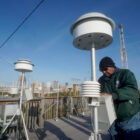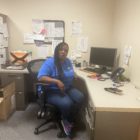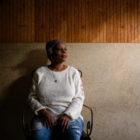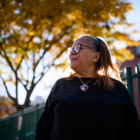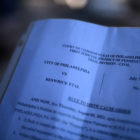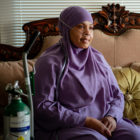-
‘You Ain’t No Big Man’: Videos Show Disparities in Cleveland Police Response to Kids in Crisis
This story is a joint project of the nonprofit The Marshall Project – Cleveland and Eye on Ohio, the nonprofit, nonpartisan Ohio Center for Journalism. Please join the free mailing lists for Eye on Ohio or The Marshall Project, as this helps provide more public service reporting. By Cid Standifer An ambulance was already outside…
-
Breathing easier in Cleveland: How Tighter Standards Could Change the City’s Air Quality Issues
This article provided by Eye on Ohio, the nonprofit, nonpartisan Ohio Center for Journalism. Please join Eye on Ohio’s free mailing list as this helps provide more public service reporting to the community. By Christopher Johnston While running for Cleveland City Council Ward 3 seat last year, Ayat Amin spent a lot of time canvassing…
-
A scooped-up side lot and the riverfront parcel that mysteriously got away: How rules written for distressed ‘Rust Belt’ property may benefit a select few
This project provided by Eye on Ohio, the nonprofit, nonpartisan Ohio Center for Journalism. Please join Eye on Ohio’s free mailing list as this helps provide more public service reporting to your community. By Lucia Walinchus On May 12, 2021, Chris and Angela Powers submitted a $4,000 bid for a Lawrence County Land Bank property. …
-
Giving back? Charities laud Columbia Gas in $212 million rate hike case
Charity groups often depend on utilities for funds to do good works, but rate hikes by those utilities can impose more stress on low-income people the nonprofit groups serve. This article is provided by Eye on Ohio, the nonprofit, nonpartisan Ohio Center for Journalism, in partnership with the nonprofit Energy News Network. Please join the…
-
Mental health worker shortage grows in Ohio
This story provided by Eye on Ohio, the nonprofit, nonpartisan Ohio Center for Journalism together with the Cleveland Observer. Please join Eye on Ohio’s free mailing list as this helps provide more public service reporting to the community. Unprecedented demand and a sparse employee pipeline are adding stress to Ohio’s already strained behavioral health system.…
-
Water bill woes part 2: What can Philadelphia learn from Cleveland’s water department?
Exploring what can be done to help cities’ poorest residents who struggle with water debt This is part two of a three-part series looking at the state of water affordability in Cleveland, Philadelphia and beyond, authored by the Northeast Ohio Solutions Journalism Collaborative in partnership with Resolve Philly in Philadelphia. You can find Part 1…
-
A tale of two cities’ water bills: how one place was able to reduce mounting utility costs for low-income households and how Ohio may follow suit
By Conor Morris If Kevina Chapolini-Renwrick couldn’t pay the $15,000 water bill, she’d lose her home. The South Philadelphia resident began to panic when she saw the city had tacked a notice on her door threatening her with legal action, back in the summer of 2021. Her husband had inherited the property from his parents…
-
Sidebar: Why compare Cleveland and Philadelphia, and why does this matter?
By Conor Morris Across the U.S., the cost of water and sewer has only gotten more expensive over the last several decades, with the average water bill increasing by 30% between 2012 and 2019, according to a utility bill index conducted by Bluefield Research. As of 2019, low-income households spent an average of almost 10%…
-
Ohioans struggle to get help with utility bills
Federal programs exist, but how easy are they to access? By Conor Morris Rashidah Abdulhaqq worries her electricity and heat will be shut off. These are vital services during normal times, but especially during the winter, and especially when she has a portable oxygen tank she carts around to keep herself alive. Flanked by several…
-
Plaintiff, Defendant, and Judge: How some Ohio counties entrust the same officials to collect taxes and wipe tax liens
This project was funded by a grant from the Pulitzer Center and provided by Eye on Ohio, the nonprofit, nonpartisan Ohio Center for Journalism. Please join the free mailing lists for Eye on Ohio as this helps provide more public service reporting. By Lucia Walinchus and Emily Crebs Shortly after Athens County started a land…


